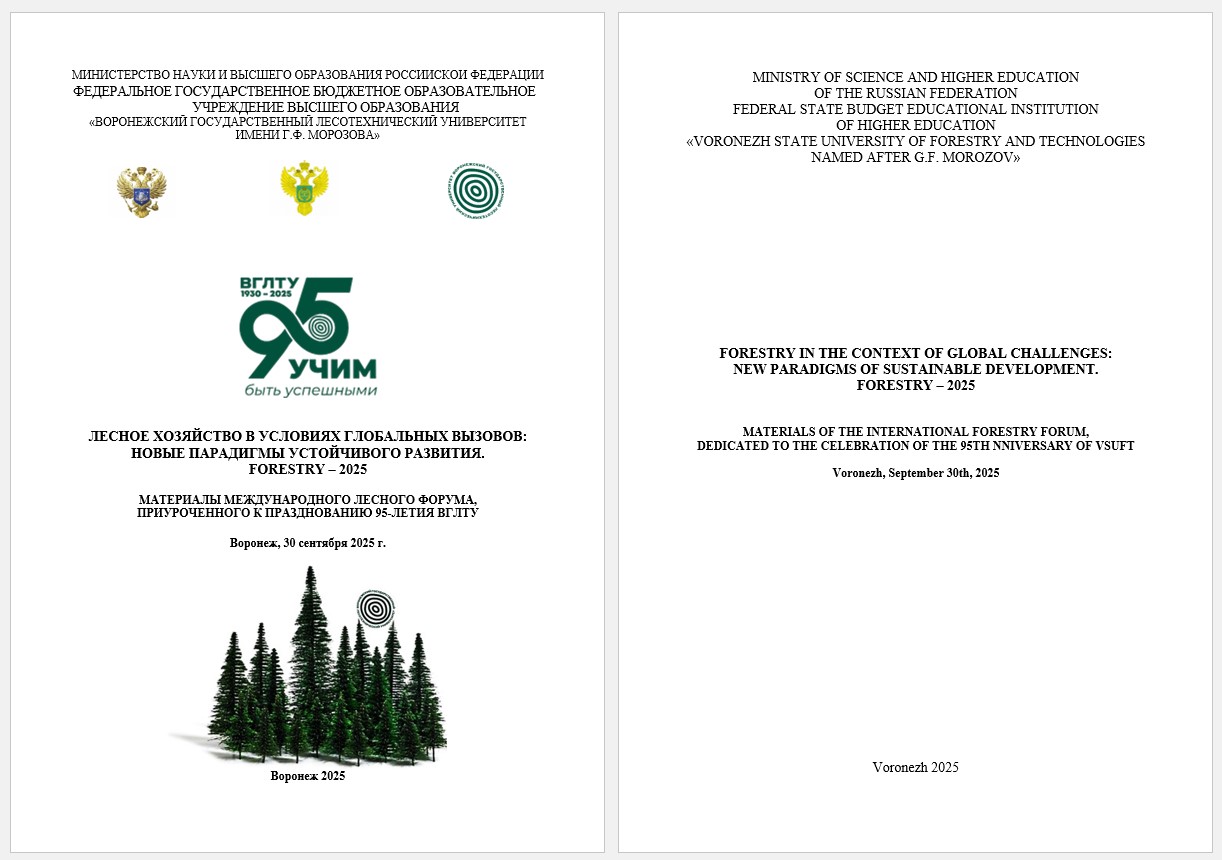Russian Federation
Russian Federation
Pushkino, Moscow, Russian Federation
Russian Federation
The study analyzes various systems for determining the volume and species composition of timber in stacks and logging trucks trailers. Promising software tools are identified for measuring the timber volume based on photo image analysis, including the computer vision technologies. The article provides examples of applying modern computer vision technology based on the YOLO model to define the timber species composition. The results demonstrated high accuracy in recognizing tree species be means of computer vision. The trained neural network can be used in various software products that determine timber volume based on photo or video image analysis.
timber assortment, species recognition, stacks, logging trailers, YOLO, data labeling, neural network training
1. Voytov D.Yu., Vasil'ev S.B., Kormilicyn D.V. Razrabotka tehnologii opredeleniya porody derev'ev s primeneniem komp'yuternogo zreniya//Lesnoy vestnik / Forestry bulletin, 2023, T. 27, N 1, C. 60-66.
2. Proekt neurowood. Primenenie AI/CV v lesnoy otrasli. – URL: https://neurowood.ru/ (data obrascheniya: 12.08.2025).
3. Chiryshev Yu.V., Atamanova A.S. Raspoznavanie kruglyh lesomaterialov s pomosch'yu sluchaynyh reshayuschih derev'ev i gistogrammy napravlennyh gradientov//Fundamental'nye Issledovaniya, 2017, N 1, C. 124-128.
4. Berendt F., de Miguel-Díez F., Wallor E., Blasko L., Cremer T. Comparison of different approaches to estimate bark volume of industrial wood at disc and log scale//Scientific Reports, 2021, T. 11, N 1, C. 15630.
5. Dralle – Measurements you can trust. – URL: https://dralle.dk/ (data obrascheniya: 12.08.2025).
6. Gulli A., Pal S. Deep Learning with Keras/Google-Books-ID: 20EwDwAAQBAJ. – Packt Publishing Ltd, 2017. – 310 p.
7. Imambi S., Prakash K.B., Kanagachidambaresan G.R. PyTorch//Programming with TensorFlow: Solution for Edge Computing Applications/ eds. K.B. Prakash, G.R. Kanagachidambaresan. – Cham: Springer International Publishing, 2021. – P. 87-104.
8. Jiang P., Ergu D., Liu F., Cai Y., Ma B. A Review of Yolo Algorithm Developments: The 8th International Conference on Information Technology and Quantitative Management (ITQM 2020 & 2021): Developing Global Digital Economy after COVID-19//Procedia Computer Science, 2022, T. 199, C. 1066-1073.
9. de Miguel-Diez F., Purfürst T., Acuna M., Tolosana-Esteban E., Cremer T. Estimation of conversion factors for wood stacks in landings and their influencing parameters: a comprehensive literature review for America and Europe//Silva Fennica, 2023, Vol. 57, Estimation of conversion factors for wood stacks in landings and their influencing parameters, No. 1, P. 1-47.
10. de Miguel-Díez F., Guigue P., Pettenkofer T., Tolosana-Esteban E., Purfürst T., Cremer T. Development and evaluation of a novel 3D simulation software for modelling wood stacks//PloS one, 2022, T. 17, N 3, C.
11. Open Source Data Labeling. - URL: https://labelstud.io/ (data obrascheniya: 01.09.2025).
12. Sidorenkov V., Achikolova I., Ryabtsev O., Kapitalinin D. Using YOLOv8 for interpreting survey data of high spatial resolution in the visible spectrum range//The 4th International Electronic Conference on Forests. – Basel, Switzerland: MDPI, 2024.
13. Smart Timber. - URL: https://smart-timber.com (data obrascheniya: 12.08.2025).
14. Zhou Z.-H., Feng J. Deep forest//National Science Review, 2019, T. 6, N 1, C. 74-86.





